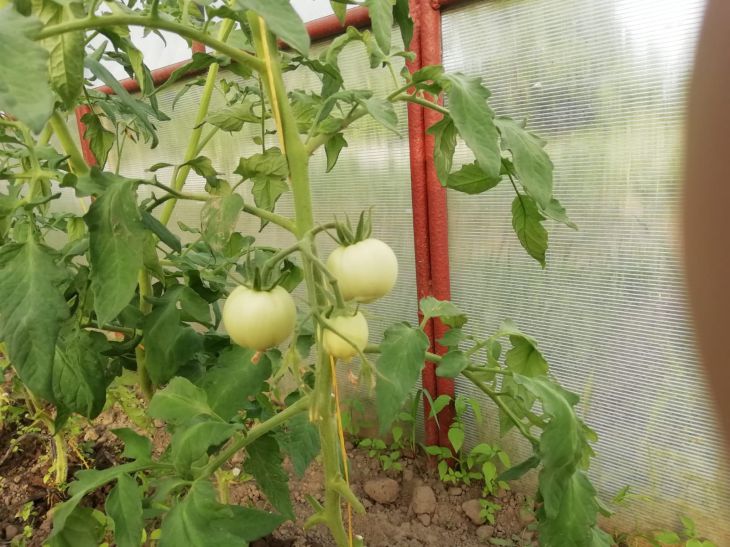Water your tomato bushes with this solution to get a good and large harvest.
Tomato bushes need good feeding so that the fruits are large, sweet and tasty.
Tomatoes grown in greenhouse conditions require more attention and feeding than those grown in open ground.
Main rules:
- You can't plant tomatoes after nightshades.
- It is better to plant tomatoes after cabbage and legume crops and various greens.
- It is necessary to fertilize with mineral and organic fertilizers.
- Do not add fresh manure, otherwise the plants may become infected with pathogenic microflora.
- Regularly loosen and hill up the soil around the bushes.
- Until the end of the fruiting period, you need to feed the plants every two weeks and treat them against pests and diseases.
Signs of insufficient feeding:
If the plant does not have enough nitrogen, the growth of leaves and the main stem slows down and yellowing appears.

Lack of potassium fertilizers affects the leaves of plants, yellow-brown spots appear, and the leaves curl at the ends.
Vegetables turn brown.
Phosphorus fertilizer is necessary for plant growth.
If there is a deficiency, this process stops, and tomatoes acquire a green-blue and grayish color.
If any of these signs appear, you need to feed the plants immediately.
Mineral supplements:
- Urea: 5-6 g per 1 sq. m.
- Potassium salt: 6-10 g.
- Double superphosphate: up to 25 g.
Organic fertilizers:
Infusion of bird droppings: 100 g per 1 sq. m.
During the flowering period, growth stimulants can be added. In greenhouse conditions, tomatoes need mineral fertilizers.
After adding the fertilizer, the bushes are watered generously.
- First feeding: ammonium nitrate 15-20 g, superphosphate 45-50 g and potassium chloride 10 g. Feeding is done 7-10 days after planting the seedlings in the ground.
- Second feeding: superphosphate 80 g, saltpeter 30 g and potassium 25 g. Fertilizers are applied when the first and second order of fruits appear.
- Third feeding: superphosphate 80 g, saltpeter 40 g and potassium 30 g. Feed at the time of fruit filling.
Once a month, you need to carry out foliar feeding of tomatoes: manganese sulfate 4 g, boric acid 3 g, copper sulfate 2 g and zinc sulfate 2 g. Organic fertilizers are also suitable. This can be a solution of rotted humus and water in a ratio of 1:4 or bird droppings 1:10. If you follow these rules, the harvest will be large, and the fruits will be sweet and tasty.
